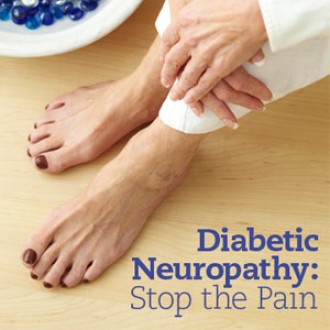Diabetic neuropathy is the most common complication of diabetes mellitus and affects 50% of patients with diabetes mellitus.
Diabetic peripheral neuropathy is the result of peripheral nerve damage from long-term hyperglycemia and is characterized by the presence of symptoms such as: Numbness or tingling in the hands and feet with a distinctive "hockey"
- Pain or burning sensation at the limbs
- Muscle weakness and cramps usually on the legs
In addition to the nerves responsible for sensation and movement, peripheral neuropathy can also affect the autonomic nervous system by the occurrence of symptoms such as:
- Changes in heart rate, fast tachycardia, orthostatic hypotension
- Malfunction and hypertrophy of the left ventricle of the heart
- Digestive problems (vomiting, diarrhea, constipation)
 Excessive or too little sweating
Excessive or too little sweating- Urological and sexual problems etc
Risk factors
The most common factors associated with an increased risk of diabetic neuropathy include the following:
- Insufficient control of blood glucose levels
- Arterial hypertension
- Dyslipidemia
- Smoking
- Abuse of alcohol
- Long-term diabetes mellitus
- Age
Patients with uncontrolled diabetes have higher rates of morbidity and complications. Repeated wounds at the limbs can cause splitting of the skin and ulceration usually in the legs, resulting in possible contamination by a micro-organism.
Diabetic Foot
The term "diabetic foot" is used to describe all skin manifestations occurring in the lower limbs. This complication usually starts with a small skin patch on the foot and develops into an ulcer.
Due to neuropathy and loss of sensation in the legs, this may not be perceived by the patient as a result of possible contamination by a microorganism, increasing the likelihood of some large or small amputation.
At Veresies Clinic diabetic neuropathy and diabetic foot is a situation that can be controlled.
All Programs of “Veresies” Clinic are approved and supervised by the Cyprus National Addictions Authority (CNAA).
CONDACT US

